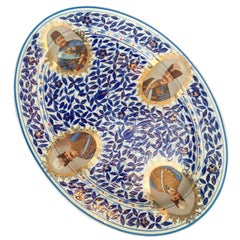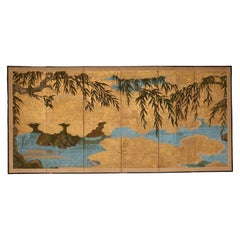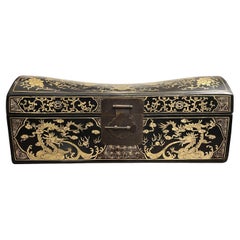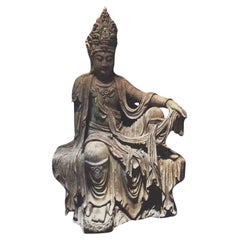Australia - Asian Art and Furniture
1950s Japanese Late Victorian Vintage Australia - Asian Art and Furniture
Porcelain
1650s Japanese Edo Antique Australia - Asian Art and Furniture
Gold Leaf
Early 18th Century Japanese Edo Antique Australia - Asian Art and Furniture
Gold Leaf
Early 20th Century Chinese Australia - Asian Art and Furniture
Hardwood
Late 19th Century Chinese Qing Antique Australia - Asian Art and Furniture
Hardwood
19th Century Japanese Antique Australia - Asian Art and Furniture
Porcelain
Early 1900s Tibetan Tibetan Antique Australia - Asian Art and Furniture
Silver
19th Century Antique Australia - Asian Art and Furniture
Pine
19th Century Japanese Antique Australia - Asian Art and Furniture
Porcelain
15th Century and Earlier Chinese Antique Australia - Asian Art and Furniture
Ceramic
15th Century and Earlier Chinese Antique Australia - Asian Art and Furniture
Porcelain
1920s Japanese Taisho Vintage Australia - Asian Art and Furniture
Silk
19th Century Japanese Antique Australia - Asian Art and Furniture
Porcelain
18th Century Antique Australia - Asian Art and Furniture
Oak, Walnut
19th Century Japanese Antique Australia - Asian Art and Furniture
Porcelain
Early 20th Century Japanese Australia - Asian Art and Furniture
Wood, Lacquer
2010s Australian Mid-Century Modern Australia - Asian Art and Furniture
Leather, Ash
15th Century and Earlier Chinese Ming Antique Australia - Asian Art and Furniture
Ceramic
19th Century Japanese Antique Australia - Asian Art and Furniture
Porcelain
1920s Japanese Vintage Australia - Asian Art and Furniture
Wood, Lacquer
1970s Australian Organic Modern Vintage Australia - Asian Art and Furniture
Earthenware
Early 20th Century Japanese Australia - Asian Art and Furniture
Terracotta
Early 18th Century Japanese Edo Antique Australia - Asian Art and Furniture
Gold Leaf
Early 17th Century Japanese Edo Antique Australia - Asian Art and Furniture
Cedar
21st Century and Contemporary Australia - Asian Art and Furniture
Wood, Olive
19th Century Japanese Antique Australia - Asian Art and Furniture
Porcelain
Early 19th Century Indian Antique Australia - Asian Art and Furniture
Foil
19th Century Chinese Qing Antique Australia - Asian Art and Furniture
Porcelain
Late 18th Century Japanese Edo Antique Australia - Asian Art and Furniture
Wood, Paper
18th Century Japanese Antique Australia - Asian Art and Furniture
Silver Leaf
Late 19th Century Chinese Qing Antique Australia - Asian Art and Furniture
Bronze
Late 19th Century Japanese Edo Antique Australia - Asian Art and Furniture
Cedar
19th Century Japanese Antique Australia - Asian Art and Furniture
Porcelain
Late 19th Century Chinese Qing Antique Australia - Asian Art and Furniture
Jade
15th Century and Earlier Chinese Ming Antique Australia - Asian Art and Furniture
Terracotta
Early 20th Century Japanese Taisho Australia - Asian Art and Furniture
Late 19th Century Japanese Antique Australia - Asian Art and Furniture
Porcelain
19th Century Chinese Qing Antique Australia - Asian Art and Furniture
Porcelain
Late 19th Century Japanese Meiji Antique Australia - Asian Art and Furniture
Gold Leaf
18th Century Japanese Antique Australia - Asian Art and Furniture
Gold Leaf
Late 19th Century Chinese Qing Antique Australia - Asian Art and Furniture
Hardwood
Late 19th Century Japanese Meiji Antique Australia - Asian Art and Furniture
Porcelain
16th Century Japanese Antique Australia - Asian Art and Furniture
Gesso, Wood
Mid-20th Century Japanese Showa Australia - Asian Art and Furniture
Wood, Paper
19th Century Japanese Antique Australia - Asian Art and Furniture
Porcelain
Early 20th Century Chinese Australia - Asian Art and Furniture
Bronze
Late 19th Century Chinese Antique Australia - Asian Art and Furniture
Hardwood
19th Century Japanese Antique Australia - Asian Art and Furniture
Ceramic
20th Century Japanese Australia - Asian Art and Furniture
Wood
15th Century and Earlier Chinese Archaistic Antique Australia - Asian Art and Furniture
Bronze
1780s Japanese Edo Antique Australia - Asian Art and Furniture
Cedar
1960s Italian Mid-Century Modern Vintage Australia - Asian Art and Furniture
Teak
Early 20th Century Japanese Taisho Australia - Asian Art and Furniture
Paper, Silk
Early 20th Century Chinese Qing Australia - Asian Art and Furniture
Metal, Brass
1890s Japanese Meiji Antique Australia - Asian Art and Furniture
Bronze
17th Century Chinese Ming Antique Australia - Asian Art and Furniture
Wood
17th Century Chinese Ming Antique Australia - Asian Art and Furniture
Wood
17th Century Chinese Ming Antique Australia - Asian Art and Furniture
Wood
Read More
Chicago’s Pagoda Red Has a Spirited Mix of Asian Antiques and Bold New Art
For 25 years, gallerist Betsy Nathan has leveraged her keen eye and key connections to bring a unique selection of rare finds to the market.
In L.A., Gallerist JF Chen Has Long Championed Eclectic Blue-Chip Design
Now working alongside his daughter Bianca, dealer Joel Chen has presented a most covetable array of antiques, art and contemporary creations for more than 40 years.
12 Calming Spaces Inspired by Japanese Design
From cherry-blossom-adorned walls paired with glamorous lighting to wood-paneled ceilings above checkerboard-patterned chairs, these 12 spaces seamlessly blend Eastern and Western aesthetics.
Rodrigo Rivero Lake’s Mexico City Showroom Is a Museum-Worthy Trove of Spanish Colonial and Asian Antiques
The dealer and curator has spent the past 50 years amassing a collection of exceptional art, furniture and architectural elements that trace the cultural influence of the Spanish empire from Europe to the Americas and beyond.
16 Refined Asian-Inspired Interiors
These spaces exemplify how Eastern elements elevate a home's decor.





